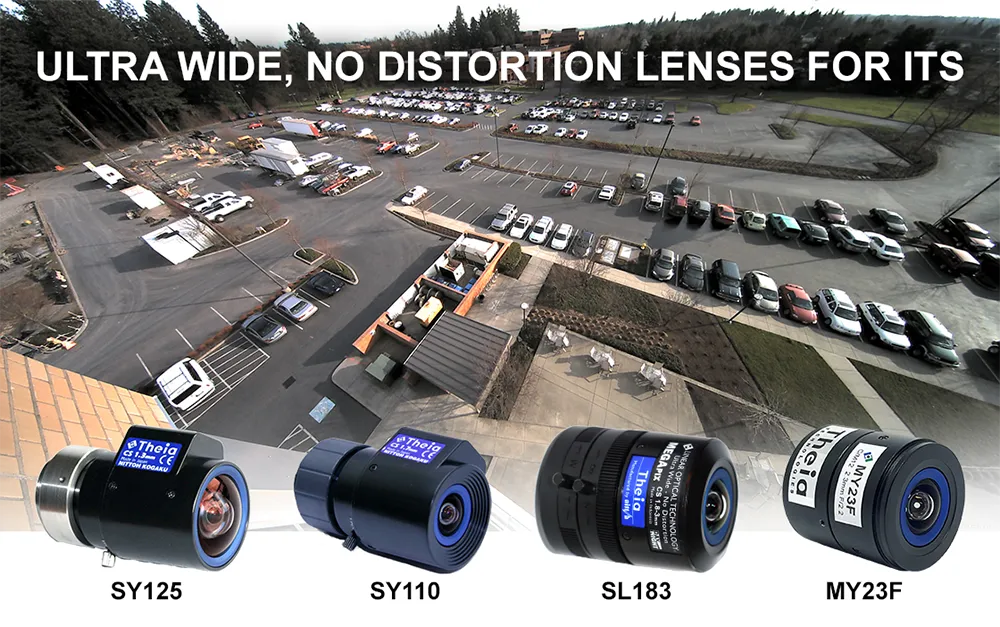
To counter the drawbacks of fisheye-style optics, Theia Technologies has developed a suite of rectilinear lenses offering a different, ultra-wide field of view without the barrel distortion or loss of edge resolution characteristic of fisheye style lenses. Theia achieves this optically, without the use of image correction software or its inherent latency.
The company employs its patented Linear Optical Technology to create a family of multi-megapixel lenses that offer horizontal fields of view up to 135 degrees with very low distortion while improving the resolution at the image edge compared to typical wide-angle lenses.
Applications for Theia’s family of ultra-wide, low distortion lenses include providing great peripheral vision for situational awareness in navigation and remote operation of vehicles and robots used in a variety of ITS applications from logistics to assisted and unmanned vehicles. They capture wide areas at short distances such as in under-vehicle surveillance and shipping container identification, among many other imaging tasks, including applications in close-up applications such as ATMs, card-locked garage entries, and multi-door entryways where both high image detail and wide fields of view are required. Other applications for Theia’s family of ultra-wide, low-distortion lenses include effectively monitoring large areas like parking lots, multi-lane tolling stations, and warehouses.
Choosing the right lens for an application depends on many factors including field of view, required image resolution, multi-spectral capability, image format and mount, among others. To assist in lens selection, Theia offers an image resolution simulator and lens calculator that relates FOV, resolution, and object distance.
Visitors to the Theia website will find it also offers other tools and white papers for a better understanding of its lens technology and selection of the optimal lens for your application.
Content produced in association with Theia Technologies










